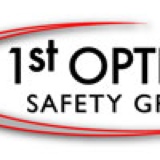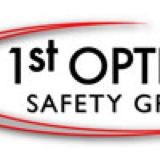Information
-
Audit Title
-
Document No.
-
Client / Site
-
Conducted on
-
Prepared by
-
Location
-
Personnel
Part 1: GENERAL INFORMATION
-
Select date
The responsible person for fire safety
-
Name of the responsible person
-
Contact details of responsible person
1 The Building
-
Address of Premises assessed.<br>
-
Add location
-
Number of Floors
- 1
- 2
- 3
- 4
- 5
- 6
- 7
- 8
- 9
- 10
-
Floor area: (m2 per floor)
-
Floor area: (m2 total)
-
Brief details of construction:
-
Occupancy type:
2 The occupants
-
Maximum number of occupants -Weekdays
-
Maximum number of occupants -Weekends
-
Maximum number of members of the public at one time:
3 Occupants at special risk
-
Are there sleeping occupants?
-
Are there disabled occupants?
-
Are Young Persons employed?<br>(An individual risk assessment would be required for anyone under 16 years old)
-
Are there occupants in remote areas?
-
Are there lone workers?
4 Previous Fire loss experience
-
Is there any previous history of fire loss in the premises (if yes give details)
5 Other relevant background
-
Is there a prohibition /alteration / enforcement notices in force? (if yes give date of issue)
Part 2: FIRE HAZARDS AND ELIMINATION OR CONTROL
6 Electrical sources of ignition
-
Is the fixed wiring installation periodically tested and inspected?
-
Are portable appliances tested/inspected?
-
Is there a suitable policy about the use of personal electrical appliances?
-
Is there a suitable limitation on the use of trailing leads and adapters?
7 Smoking
-
Is smoking prohibited in the building?
-
Is smoking prohibited in appropriate areas?
-
Are there suitable arrangements made for those who wish to smoke?
-
Is there absence of any evidence of breaches of smoking policy?
-
Is the appropriate smoking prohibition notice displayed at the building's entrance?
8 Arson
-
Does the basic security against arson appear reasonable?
-
Is there sufficient control of unnecessary fire load in close proximity to the building or available for ignition by outsiders?
9 Portable heaters and heating installation
-
Is the use of portable heaters avoided as far as reasonably practicable?
-
If portable heaters are used, are the more hazardous types (radiant bars and LPG) avoided?
-
If portable heaters are used are suitable measures taken to minimise the risk of ignition of combustible materials?
-
Are fixed heating installations subject to regular maintenance?
10 Cooking facilities
-
Are reasonable measures taken to prevent cooking fires?
-
Are filters changed and ductwork cleaned regularly?
-
Are suitable extinguishers available?
11 Lightning
-
Does the building have lightning protection system if required?
-
Is the Lightning protection system subject to a suitable maintenance regime?
12 Other significant ignition sources that warrant consideration
-
Are any dangerous substances used or stored in the premises. (These could include substances such as petrol, alcohol, LPG solvents and any other flammable liquids or materials)
-
Are the Dangerous substances stored in suitable areas and containers, away from potential sources of ignition?<br>This includes issues of chemical reactivity and compatibility
-
Are there any other Fire Hazards that warrant consideration within the premise?<br>(This to include any fire hazards from process; heat / spark / friction / chemical, which has the capacity to ignite, create or give off rapid heat, or generate flammable gases)
-
Details
13 Housekeeping
-
Is the standard of housekeeping adequate?
-
Are combustible materials separated from ignition sources?
-
Is the unnecessary accumulation of combustibles and waste avoided?
-
Are Means of Escape kept clear of all combustible items?
-
Do routine in-house inspections of fire precautions take place?
-
Has a risk assessment been carried out as required by the Dangerous Substances and Explosive Atmosphere Regulations 2002?
-
Are there appropriate measures for the safe storage and disposal of waste.
14 Hazards introduced by contractors and building works
-
Is there sufficient control over works by contractors (e.g. Permits to work & hot works permits)?
-
Are there arrangements for the safe storage of gas bottles and others hazardous materials
-
Are fire safety conditions and instructions communicated to contractors?
Part 3: FIRE PROTECTION MEASURES
16 Means of escape
-
Is the building provided with adequate means of escape in case of fire?
-
Are there sufficient exits?
-
Are exits easily and immediately openable where necessary?
-
Do fire exits open in the direction of travel where necessary?
-
Have sliding or revolving doors been avoided as fire exits?
-
Are there adequate means of securing exits?
-
Are there reasonable distances of travel where there is a single direction of travel?
-
Are there reasonable distances of travel where there are alternative means of escape?
-
Are escape routes adequately protected? I.e. Fire resisting construction.
-
Are there suitable fire precautions for all inner rooms?
-
Are escape routes unobstructed?
-
Are there suitable means of escape for disabled occupants?
17 Measures to limit fire spread and development.
-
Is there a sufficient standard of compartmentation and sub-compartmentation?
-
Are linings that promote fire spread avoided as far as reasonably practicable?
-
As far as can be reasonably ascertained, fire dampers are provided in ducts or vents as necessary to protect critical means of escape against the passage of fire, smoke and combustion products in the early stages of a fire?
18 Escape lighting
-
Is there a reasonable standard of normal, artificial and/or emergency escape lighting provided?
19 Fire safety signs and notices
-
Are fire safety signs and notices suitable and sufficient?
20 Means of giving warning in the event of fire
-
Is a manually operated electrical fire alarm system provided?
-
Is automatic fire detection provided throughout the whole of the premises?
-
Is automatic fire detection provided in only part of the premises?
-
Is there remote transmission of alarm signals?
21 Manual fire extinguishing appliances
-
Is there suitable and sufficient provision of portable fire extinguishers?
-
Are all fire extinguishing appliances readily accessible and unconstructed? i.e. Wall mounted or on appropriate bases.
-
Are hose reels provided?
-
Is wall signage provided relevant to the equipment?
22 Relevant automatic fire extinguishing systems
-
Type of system/s:
-
Comments and observations:
23 Facilities, equipment and devices for the protection of Fire-Fighters
-
Types of facilities e.g. Wet / Dry Risers, Fire fighters switches, etc.
-
Comments and observations:
Evacuation Strategy
-
Is a 'Single stage' / ,Two stage' or 'Progressive Horizontal' Evacuation strategy used in the premises?
Part 4: MANAGEMENT OF FIRE SAFETY
24 Procedures and arrangements
-
Person responsible for fire safety:
-
Are there competent persons available to assist in implementing fire safety arrangements?
-
Is there a suitable record of the fire safety arrangements?
-
Are appropriate fire procedures in place? (including arrangements for calling the fire service)
-
Are there suitable arrangements to meet the Fire Service on arrival and to provide relevant information, including that relating to hazards to fire fighters?
-
Is there a plan of the building available indicating the basic layout and any areas of significant risk?
-
Are there persons nominated to respond to fire?
-
Are persons nominated to assist with evacuation?
-
Are there adequate procedures for evacuation of any disabled people who are likely to be present?
-
Are there persons nominated and trained to assist in the evacuation of disabled persons?
25 Training and drills
-
Are staff given fire safety instruction and training on induction?
-
Do staff receive periodic refresher training at suitable intervals?
-
Are staff with special responsibilities given appropriate training? e.g. Fire Wardens, persons nominated to assist disabled persons.
-
Are fire drills carried out at appropriate intervals?
-
Is there monthly, six-monthly and annual testing of the emergency lighting?
-
Are all Staff fire training and Fire Evacuation Drills recorded?
26 Testing and maintenance
-
Is the workplace adequately maintained?
-
Is there weekly testing and periodic servicing of the fire detection and alarm system, including ancillary devices (e.g. door hold open devices etc.) ?
-
Is there annual maintenance and testing of fire extinguishing equipment?
-
Is there monthly and annual inspection and test of the lightning protection system?
-
Is there six monthly and annual testing of wet/dry risers?
-
Is there weekly testing and periodic inspection of sprinkler installations?
-
Is there routine checks of fire doors and final exit doors?
-
Other relevant inspection and test
-
Are there relevant records of all the above?
27 Records
-
Are there records of fire drills?
-
Are there records of fire training?
-
Are there records of fire alarm tests?
-
Are there records of emergency lighting tests?
-
Are there records of maintenance and testing of other fire protection systems?
Part 5: Significant findings and recommended remedial action.
-
1. Hazard or non compliance issue:
-
1. Recommended remedial action.
-
1. Target completion date?
-
2. Hazard or non compliance issue:
-
2. Recommended remedial action and timescale
-
2. Target completion date?
-
3. Hazard or non compliance issue:
-
3. Recommended remedial action and timescale
-
3. Target completion date?
-
4. Hazard or non compliance issue:
-
4. Recommended remedial action and timescale.
-
4. Target completion date?
-
5. Hazard or non compliance issue:
-
5. Recommended remedial action and timescale
-
5. Target completion date?
-
6. Hazard or non compliance issue:
-
6. Recommended remedial action and timescale
-
6. Target completion date?
-
7. Target completion date?
-
7. Hazard or non compliance issue:
-
7. Recommended remedial action and timescale
-
7. Target completion date?
-
8. Hazard or non compliance issue:
-
8. Recommended remedial action and timescale
-
8. Target completion date?
Re-Assessment
-
Recommended date for re-assessment
Signatures
-
Fire Risk Assessor:
-
Select date
-
Responsible Person or Person representing the Responsible Person:
-
Select date







